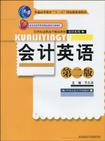会计英语
2007-9
中国人民大学出版社
于久洪 编
198
251000
本书是北京市高等教育精品教材立项项目,2005年第一版的发行量远远超过我们的预期,本次修订增加了双语会计报表部分和作者三年教学实践中的心得体会,删除了第一版中比较繁杂难懂的部分内容,更加适合高职的教与学。本书主要内容是用纯正的英语讲解财务会计操作实务,重点包括资产负债表、利润表、现金流量表、复式记账法、流动资产核算方法、长期资产核算方法、负债与股东权益核算方法以及会计报表分析等内容。本教材的特点是,文章简洁实用,案例贴切丰富,符合国际会计惯例,适合课堂教学和自学使用。 作者在长期的会计专业外语教学实践中,深感需要一本简单、实用、案例多、附答案的会计英语教材,本书就是从这方面人手作出尝试的成果。全书共九课,每课包括学习目标、正文、专业术语英汉对照、缘习题、中外财会专业网址五个部分,课后练习题均附完整的参考答案,习题与答案部分占全书的比重大约在三分之二。为了防止在教学过程中学生有了中文翻译便不注意听讲的现象发生,本书尽量减少汉字,力求以大量简洁明快的英文诠释英文专业知识,这也是本书的另一个特点。 本书介绍了大量国际会计事项所涉及的会计处理方法,尤其强调各交易事项对财务报表的影响分析,强调对于国际会计报表编制与分析能力的培养。学生具备了过硬的英文财务会计操作能力,便可以胜任21世纪各单位对于会计国际化人才的需要。
LESSON 1 INTRODUCTION TO ACCOUNTING 1.1 What Is Accounting? 1.2 Financial Accounting and Managerial Accounting 1.3 Financial Statements 1.4 Income Statement 1.5 Revenue 1.6 Expense 1.7 The Statement of Changes in Equity 1.8 Balance Sheet 1.9 Assets 1.10 Liabilities 1.11 Owner's Equity (Capital) 1.12 Statement of Cash Flows 1.13 Accounting Equation 1.14 Example for Assets=Claims 1.15 How the Elements of Accounting Equation Change 1.16 Ending Balances Terms and Phrases Exercise 1: True or False Exercise 2: Single Choice Questions Exercise 3: CasesLESSON 2 THE BALANCE SHEET AND DOUBLE ENTRY 2.1 Introduction 2.2 The Effect of Transactions on the Balance Sheet 2.3 The Two Sections of a Balance Sheet 2.4 Business Entity 2.5 Buy Jeans Not Yet to Pay 2.6 The Ordering and Classification of Assets and Liabilities 2.7 The Classification of Assets 2.8 The Classification of Liabilities(Creditors) 2.9 Working Capital 2.10 Jane's Business 2.11 Recording Business Transactions 2.12 Basic Rules for Recording Business Transactions 2.13 An Example of Dual Aspect Concept 2.14 Double Entry Rule 2.15 T-account 2.16 Two Important Rules about Double-entry Recording System 2.17 Application of the Double Entry Rule 2.18 An Example of the Double Entry Rule 2.19 Another Example of the Double Entry 2.20 Transaction No.1: Starting the Operations 2.21 Transaction No.2: Purchasing Office Supplies 2.22 Transaction No.3: Providing Services on Account 2.23 Transaction No.4: Paying Cash for Operating Expenses 2.24 Transaction No.5.Borrowing Money from Bank……LEESSON 3 CURRENT ASSETSLEESSON 4 LONG TERM ASSETSLEESSON 5 LIABILITIESLEESSON 6 OWNER’S EQUITYLEESSON 7 INCOME STATEMENTLEESSON 8 STATEMENT OF CASH FLOWSLEESSON 9 INTERPRETATIONS OF FINANCIAL STATEMENTSKey to ExerciseUseful Financial Accounting Websites
You have possibly noticed that the amount of income before taxes is the big-gest for FIFO ( $12 280), and the lowest for LIFO ( $11 980). Why so? Consider that the ending inventories are just vise versa for the two methods (respec-tively, $1 200 and $900). So, the cost of goods sold for FIFO is lower( $ 9 320) than that for LIFO ( $ 9 620). As a result, we can see the differencein the income before taxes. Since the income for FIFO is greater, the companies that employ FIFO payhigher income taxes. In contrast, companies using LIFO pay lower income taxes.As it was said before, this is a way to manipulate with figures of the financialstatements. Usually, companies use FIFO, and then go businesses that useLIFO. OK, we have seen how cost flow methods are applied assuming that we havemultiple layers, however arranged in a way so that sales go after purchases. Butwhat if we have sales and purchases mixed, like one purchase is followed by asale, then again purchase(s) and sale(s), etc. ? In this situations nothing is dif-ferent-all the rules for using FIFO, LIFO, weighted-average remain the same.The following example will give you a good illustration of applying FIFO andLIFO for sales transactions that occur intermittently with purchases.

除了目录和后面的单词外全是英文,适合英文基础比较好的人学习,本来是想买来学习的,可是全英文的看不懂,一点头绪都没有 ,还是学校的教科书。气得我要死,唉